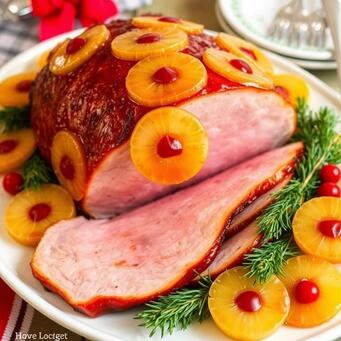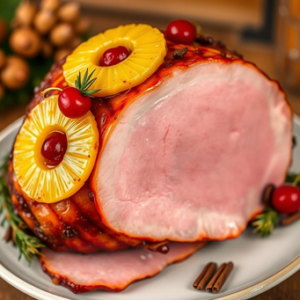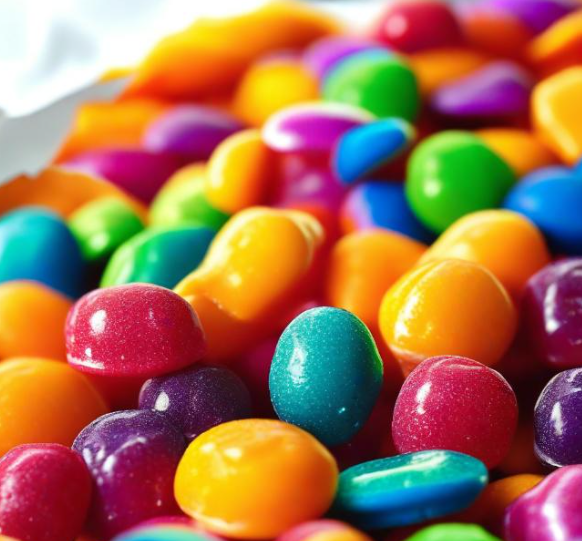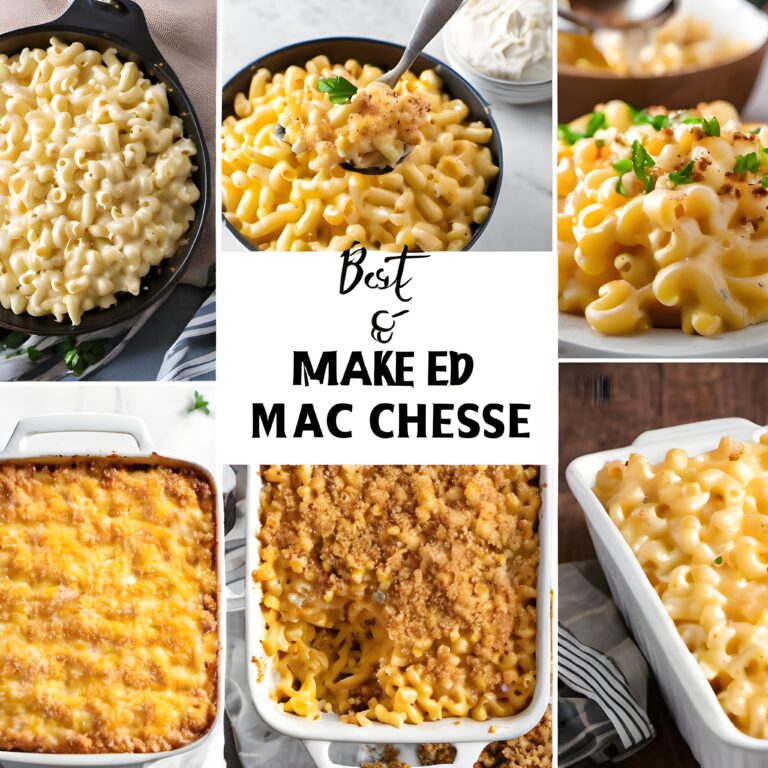Where to Buy the Ingredients and Price Range
When preparing the Pineapple-Glazed Christmas Ham, sourcing the best ingredients ensures you achieve the perfect balance of flavors. Below is a guide on where you can buy the essential ingredients and the expected price range for each item. Prices may vary depending on location and seasonality, but this will give you a general idea to help you budget for your holiday feast.
1. Ham (Bone-In or Boneless)
- Where to Buy:
- Supermarkets: Major grocery stores such as Walmart, Kroger, and Whole Foods typically stock both bone-in and boneless hams in their holiday meat section.
- Specialty Butchers: For higher-quality cuts, check with a local butcher or specialty meat shop, where they often carry artisanal, free-range, and heritage breeds.
- Price Range:
- A bone-in ham typically ranges from $2.50 to $5.00 per pound, depending on the type and brand. Boneless hams might cost between $3.50 and $7.00 per pound.
- A 6-8 lb ham (suitable for a medium-sized gathering) could cost anywhere from $15 to $50.
2. Pineapple (Fresh or Canned)
- Where to Buy:
- Fresh Pineapple: Available year-round at supermarkets like Walmart, Trader Joe’s, and Safeway.
- Canned Pineapple: You can find canned pineapple in slices or chunks at almost any grocery store, including Target, Costco, and local supermarkets.
- Price Range:
- A fresh pineapple typically costs between $2 to $5.
- Canned pineapple (15 oz) ranges from $1 to $2, with more premium options costing around $3.
3. Brown Sugar
- Where to Buy:
- Brown sugar is a staple available at most grocery stores such as Aldi, Walmart, or Whole Foods.
- Organic and premium varieties can be found at health food stores or online retailers like Amazon.
- Price Range:
- Standard brown sugar (1 lb) usually costs between $1 to $3, depending on the brand and type (light vs. dark). Organic or premium brands may range from $3 to $6 for a similar quantity.
4. Honey
- Where to Buy:
- You can find honey at any grocery store or farmer’s market. It’s available in most supermarkets, including Walmart, Target, and health food stores like Whole Foods.
- Price Range:
- A bottle of honey typically costs between $3 and $10, depending on the quality and brand. Organic or specialty honeys, such as raw or local varieties, may cost $8 to $15.
5. Mustard (Dijon or Yellow)
- Where to Buy:
- Dijon mustard and yellow mustard are common in the condiment aisle at any supermarket.
- You can also purchase them at specialty stores or online retailers for premium varieties.
- Price Range:
- Regular mustard can range from $1 to $3 per bottle. Dijon mustard typically costs between $2 to $5 for a 12 oz jar.
6. Cinnamon and Cloves
- Where to Buy:
- These spices can be found in any grocery store in the baking aisle. For premium or organic varieties, try health food stores or spice shops.
- Price Range:
- Ground cinnamon costs around $1 to $3 per bottle. Whole cloves are generally sold for $3 to $5 per jar, depending on the brand.
7. Cling Film and Foil for Wrapping
- Where to Buy:
- Cling film and foil are available in all grocery stores, big box retailers like Walmart, or online.
- Price Range:
- A standard roll of plastic wrap or aluminum foil ranges from $2 to $4 for an average-sized package.
The prices provided above are based on general averages as of December 2024. Prices may fluctuate depending on location, store promotions, and seasonality. For more accurate pricing, it’s recommended to check online grocery services or visit your local grocery store.
Additional Resources:
- Online Shopping: Websites like Amazon, Walmart, and Instacart offer the ability to shop for these ingredients with delivery options.
- Specialty Stores: If you prefer premium or organic ingredients, stores like Whole Foods, Trader Joe’s, and local farmers’ markets might offer a better selection.
FAQs :
Did you find this helpful? If you did, please share and stay tuned to our blog !!












